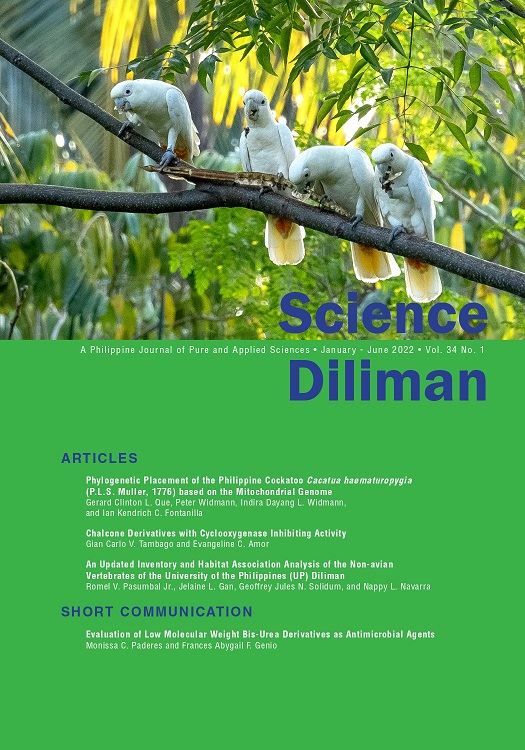From the Editor
Abstract
We are finally adapting to the new normal of the COVID-19 pandemic, realizing how a global health issue can disrupt every aspect of society. It showed us how scientists can step up and create vaccines in record time to manage a pandemic, when the process could very well have extended beyond two years. A few positives came out of our pandemic experience as reported by both local and international researchers, such as improvements in the natural environment as anthropogenic activities slowed down. This includes a temporary decrease in greenhouse gas emissions, improvement in air and water quality, and the general recovery of natural ecosystems. Though the four articles in this issue—my first as editor-inchief of Science Diliman (SD)—are not directly related to COVID-19, they all connect to health and biodiversity, two human concerns that were greatly affected by the pandemic.
Two very different ecosystems are highlighted in this SD issue. The first is discussed in the paper by Que et al. about the latest phylogeny research on Philippine cockatoos of the forests of Palawan. This paper places the local species that are most related to Tanimbar corellas of Indonesia and the Western corellas of southwest Australia. The second kind of ecosystem is discussed in the paper by Pasumbal et al. about the latest biodiversity survey of non-avian vertebrates found in the UP Diliman campus. This updates a similar survey in 1998, with the latest survey reporting the presence of additional animals: two amphibians, seven reptiles, and six new mammals. The survey affirms the high species richness found on our campus.
Tambago and Amor of the UP Institute of Chemistry present their findings on two chalcone derivatives extracted from the leaves of S. samarangense (Blume) Merr. (Java apple) that show anti-inflammatory properties. This could very well lead to the development of a new class of anti-inflammatory drugs. Similarly, the paper authored by Genio and Paderes (also of the UP Diliman Institute of Chemistry) reports the synthesis of white powder precipitates composed of bis-urea compounds. Their anti-microbial properties were tested against different microorganisms with several identified compounds showing promising results.
As universities go back to a sense of normalcy this year, we hope that local researchers are able to resume the work on projects put on hold as well as jumpstart new research studies.
Carlo Primo C. David, Ph.D.
Editor-in-Chief



